Simply put, Organic Marketing is the act of getting customers to naturally come to you over time rather than paid advertisement means. This includes all direct and instinctive manners of pulling customers to you.
This pulling of customers can occur through referrals, or naturally through search engines and social media pushing our content to people who might be interested in our services/products.
You’re already doing Organic Marketing if you have been working hard to improve your SEO and user interface.
Let’s now take a closer look at what makes it so effective and what you can do to improve it.
Grab a FREE Content Calendar to make an impact with your marketing efforts.
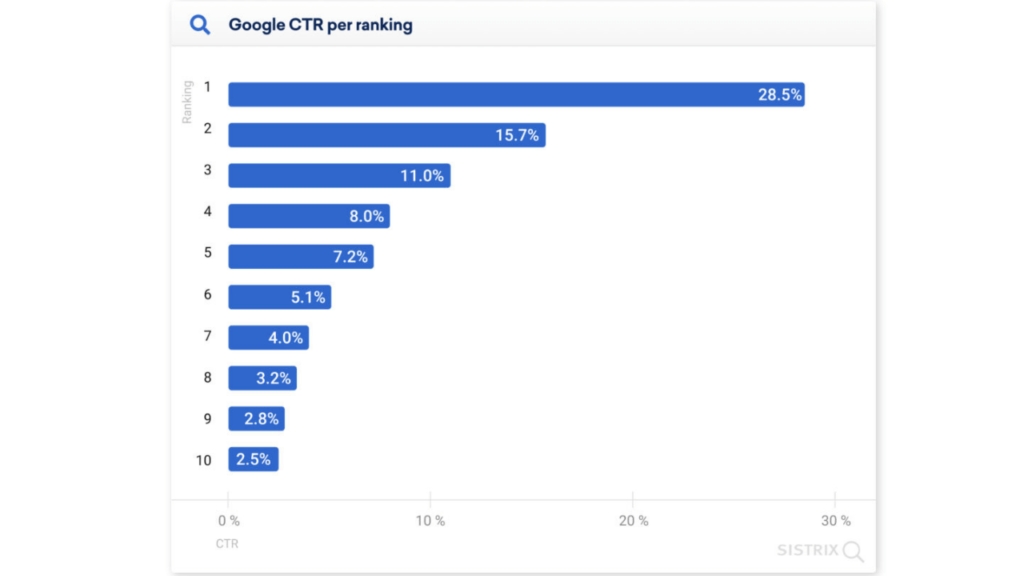
What is Organic Marketing?
Organic Marketing generates traffic naturally over time. It covers everything you don’t spend money directly on – blog posts and case studies, guest posts as well as unpaid tweets. It is more effective than paid advertising and sponsored posts. Facebook updates, or hey, ‘Did you send that email blast?’ That’s 100% organic.
The greatest form of Organic Marketing is the amalgamation of user-generated content. And nothing beats it, hands-down!
It is important to stress that “organic marketing” does not mean that money isn’t spent. You will still invest in your marketing strategy as well as any related software (Hubspot to inbound, MailChimp to email lists, Buffer, Sprout, etc.)
If a person searches for a term like ‘Buy Cricket Bat’, the SERPs will have two kinds of results. One with a small mention of the word ‘Ads”, and the other, without a mention. Those results that come without the mention of ‘Ads’ are those that are organic, whether they are Service Pages, Product Pages, Blog Posts, Instagram posts, or Twitter links.
Another phenomenon is that of Sponsored posts which can be seen on industry websites. This is where brands pay publications to write about their products or something related to them. That’s not organic.
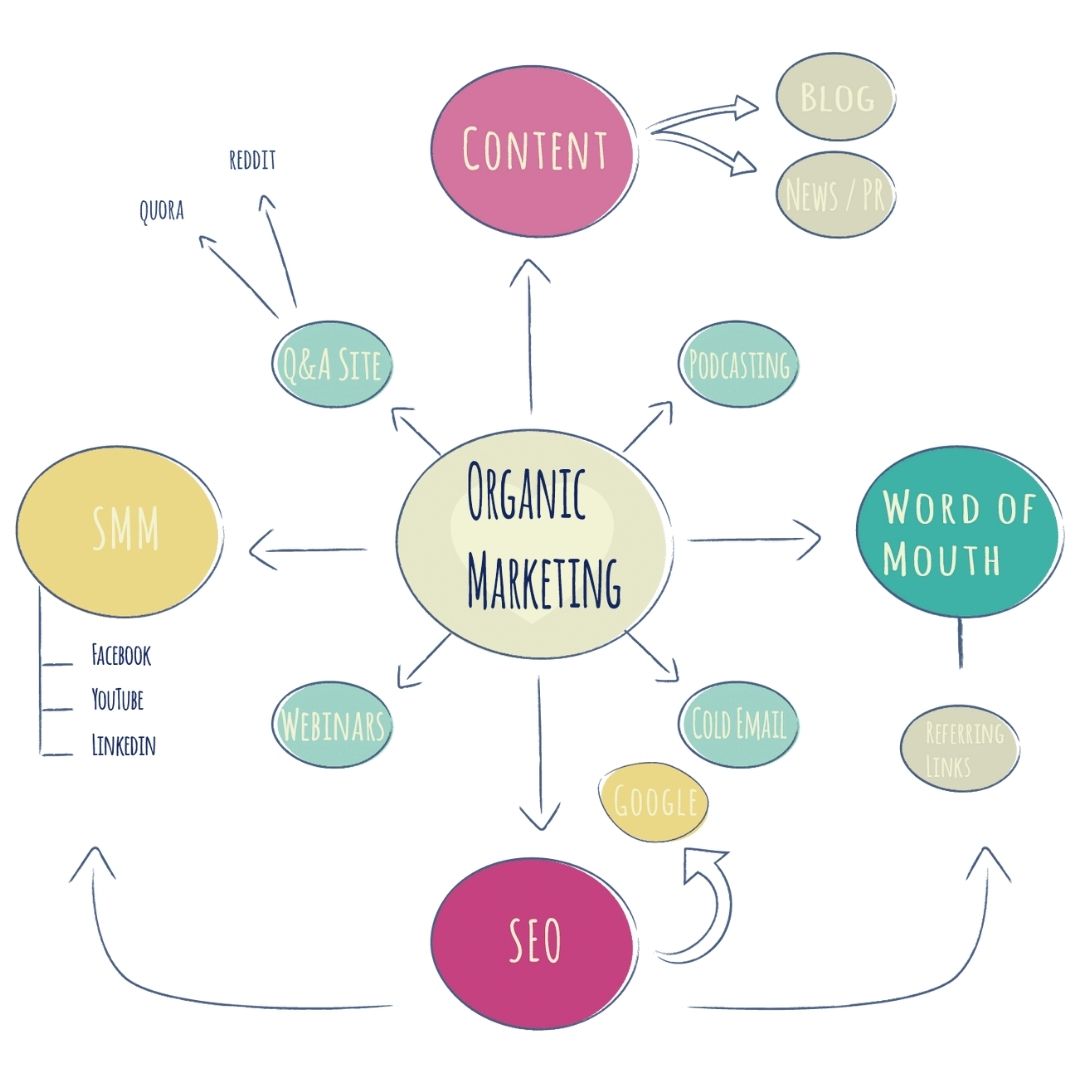
Why go Organic to Market your Business?
Organic Marketing is primarily used to fill the top of a sales funnel. It can be confusing to understand its value. At the heart of it, an organic marketing strategy aims to build an emotional connection with your customers through informative and entertaining content. This will ensure that you are top of mind for them when they make a purchase decision.
This form of marketing has a significant impact on conversions. Businesses that rely solely on paid advertising often waste money by reducing brand awareness and engaging with their customers. This is where organic marketing can be used as a backup to a paid strategy.
Such a combination of marketing tactics drives traffic to your website and leads to followers. These can then be targeted through ads which will significantly lower the cost per click (CPC), and increase return on investment (ROAS).
What are the Organic Marketing Services that are available to you?
Your target market and the product/service being sold will determine which platform is best for you. These platforms are most commonly used and will be part of your organic marketing strategy.
Organic Marketing on Social Media
Facebook, the largest social network, offers many opportunities for marketers to connect directly with customers. A business owner can create groups and connect with other people in their niche. They can also join groups to establish authority and build authority in their subject matter. All this without investing in any paid ad tactic.
A Quick Tip: Check the image below to learn how to use Social Media for growth.
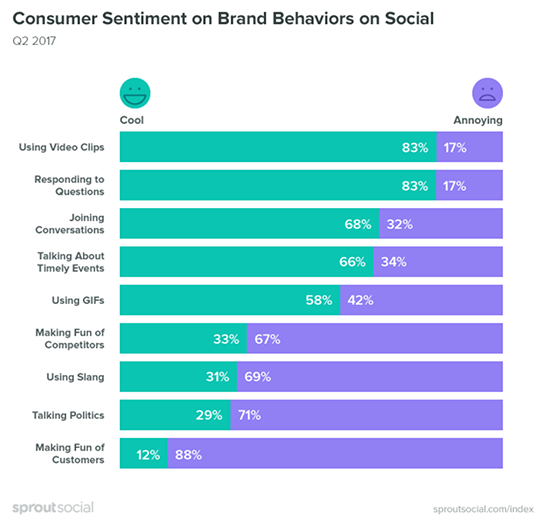
Instagram has quickly overtaken Facebook among younger generations. This platform is best for niche brands such as small dogs or sustainable travel. It can also be used to quickly create a community of like-minded people without breaking the bank. All you need is good photography/graphic design and creative writing skills.
Pinterest, another image-based platform allows users to save their inspirations to boards that they can refer to later. It has the highest conversion rate among all social media and is especially useful for visually-oriented businesses like interior design and fashion. Again, you can work on it without investing in a paid advertising tactic.
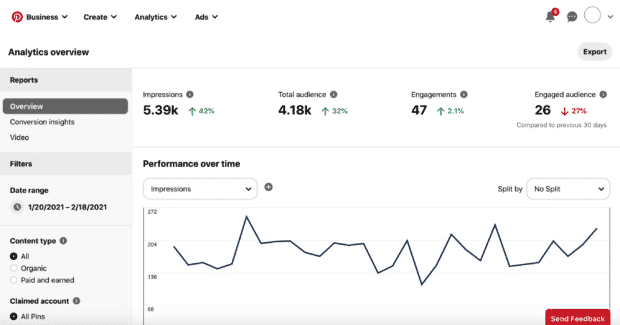
LinkedIn, a professional social network, is built for business networking. LinkedIn users prefer to read long-form, news-style content that addresses a problem or addresses a specific issue. LinkedIn is the best platform for business connections and sharing B2B content. And that makes it the best organic marketing channel to sell services and products to other businesses.
Snapchat
Snapchat is less popular than other social networks, but it allows users to share short videos or photos with their friends. This is a great way to promote products for Gen Z and younger. Again there is absolutely no advertisement cost involved.
Organic PR & Influencer Marketing
Digital PR
Digital PR is closely linked to content marketing. It involves connecting with editors and bloggers of trusted online publications and getting them to share your content. If you can get to publications that are big and trustworthy, a digital PR campaign could lead to huge growth.
Just like here, we were in the news for a good reason; Ahmedabad-based digital marketing thought leader launches ‘Missive Digital’ – a focused Organic Marketing Agency
Marketing to Influencers
Influencer marketing is becoming a very competitive space. It’s difficult to find genuine influencers amongst the paid-for followers and likes. If you can be a thought leader and produce expert-level content, you definitely can get a lot of traffic from like-minded or curious individuals.

Organic Content Marketing
YouTube
YouTube, although it appears to be a content channel only, is second in search engine power behind Google. YouTube allows you to share videos that are directly relevant to your business. This gives potential customers a chance to get to know and trust you before making a purchase decision. This is especially useful for knowledge-based services such as coaches and business advisors.
Look at the below video from Dollar Shave Club. The video has garnered 27 million views until now. And is sure to get more. And that is without the need to spend on ads.
Blogging
A blog can be an independent website that directs people to your product or services, or it can be a section of your website. You can provide information on problems that consumers face in your niche or entertaining content that leads people to your website. And that’s where you control your audiences.
Content Sharing
Reddit and Quora are the two largest sites for user-generated content (UGC). Both are great tools to drive traffic to your site and build authority in your niche.
Reddit is more conversational than Quora. It is a Q&A platform where users can post questions and everyone is allowed to answer them. You can use both platforms by searching for questions in your field and providing a detailed answer.
Example: Check my Quora profile where I talk about things that interest me.
SEO
SEO falls under the umbrella of organic digital marketing and refers to the process of optimizing your website for search engines. Google’s algorithm is complex and ever-changing. SEO strategies include technical website optimization as well as content marketing, and social media. This is a vast topic that is beyond the scope of this article.
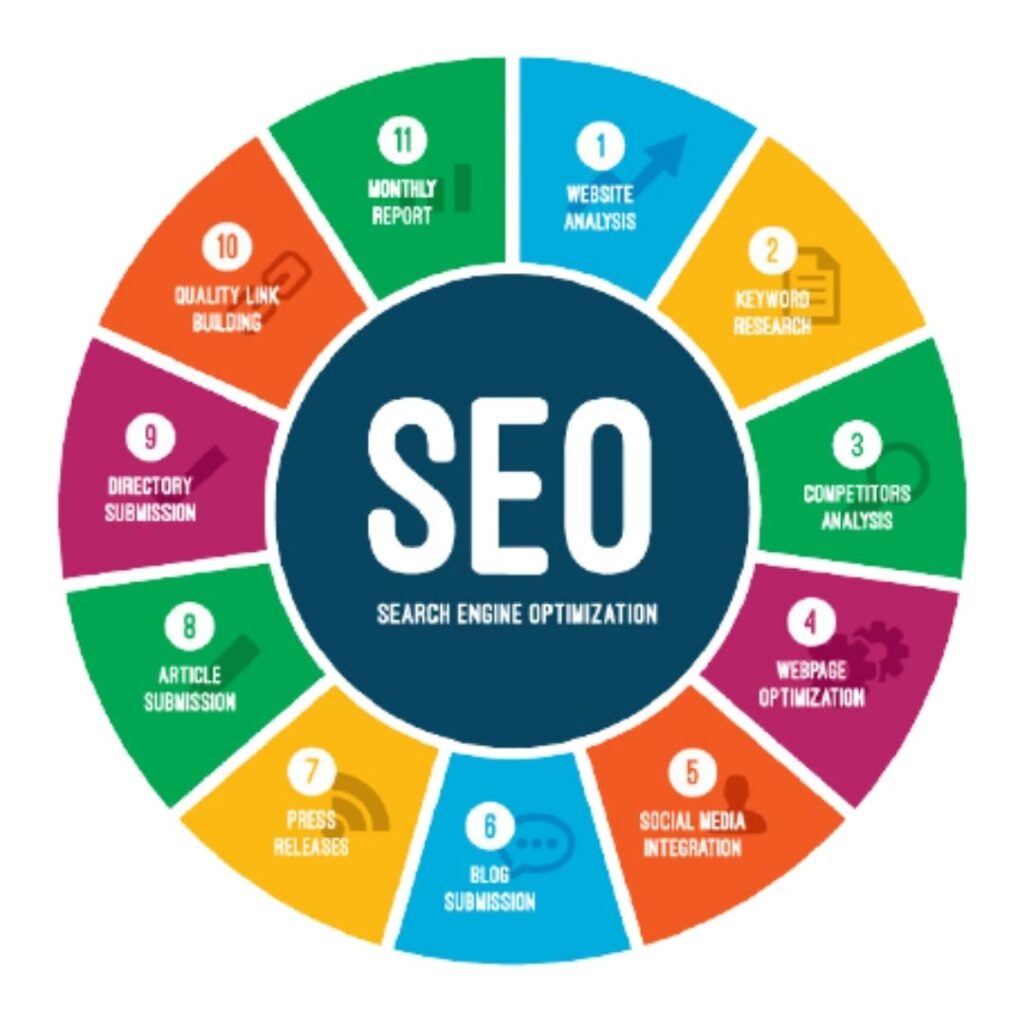
Summarizing the Importance of Investing in Organic Marketing?
Organic strategies bring customers to your business over time. Instead of advertising directly to your target audience, you are drawing them in by giving them the information they need. This is also called Inbound Marketing.
But remember, there is no quick way to get results. Organic marketing strategies won’t increase your traffic overnight. It can take months, if not years to achieve the results you desire.
But the good thing is that you’ll have that performance for life once you have it. Organic marketing is a way to create permanent traffic to your site.
How to Create an Organic Marketing Strategy?
Introduction to Strategy Creation
It’s like this: A search engine can convince an organic marketing strategy that your website is relevant to the needs of your audience. These strategies are time-consuming.
We want to create permanent traffic sources that can help users become potential clients. What are these sources?
1. Your Website’s Content and Assets.
This will help you get traffic from search engines.
2. Guest Posts.
Content placed on an industry-related or influencer’s website is another way of getting your content in front of a wider audience. Be sure to include a link to your content.
3. Social Media Posts.
Tweets or LinkedIn posts with a link back to your website will remain live indefinitely and bring new traffic to the site.
So, we can say that Organic Marketing is a series of ongoing marketing efforts. In the long-term, the money you spend in the first month will continue to bring customers. Although you may not see significant traffic gains in the first month, your spending decreases as traffic grows over time.
Let’s Start Creating an Organic Marketing Strategy
1. Analyze Your Target Audience’s Traffic Habits
Your target market might be looking for businesses similar to yours. They might use review sites, consult industry publications, or search for “What do you need to solve [X] problem?”. Or they may follow social media influencers and track hashtags in their quest for a better solution.
Once you have answered this question, then post the type and location of the content they are looking for.

2. Create a Content Library for Your Website
Don’t neglect your website. Create high-quality content for it. A site that has little or no content can significantly reduce your sales.
They say variety is the spice in life. There’s no reason to limit yourself to one type of content. While blog posts are important, don’t forget videos, infographics, and downloadable assets such as white papers and ebooks.
3. Optimize Your Website for Organic Search
SEO helps you rank your site higher on search engine results pages and your content more frequently, which leads to increased organic traffic. SEO is complicated and always changing. Here are some simple tips to help you get started.
- Make sure every page has metadata. This allows search engines to understand the purpose of your website. Title tags should always include your most relevant keywords and image tags with alt attributes.
- Mobile-friendly design: Google now ranks websites according to how they perform on tablets and smartphones.
- Increase your organic reach by using social media marketing
Share great content assets on your website with social media. Here are a few tips for that:
- Platform selection: Who is your target audience and what social media sites bring you the most traffic? LinkedIn is essential for B2B companies, but Instagram, Twitter, and Facebook all have their advantages.
- Type of post: While engagement is great, traffic is what you need. Which posts work best to bring readers to your site?
- Links: Your goal is to increase traffic and revenue. Make sure that your social media posts link back to the website.
- Schedule When are people most active in social media? To increase traffic, schedule your posts according to the calendar.
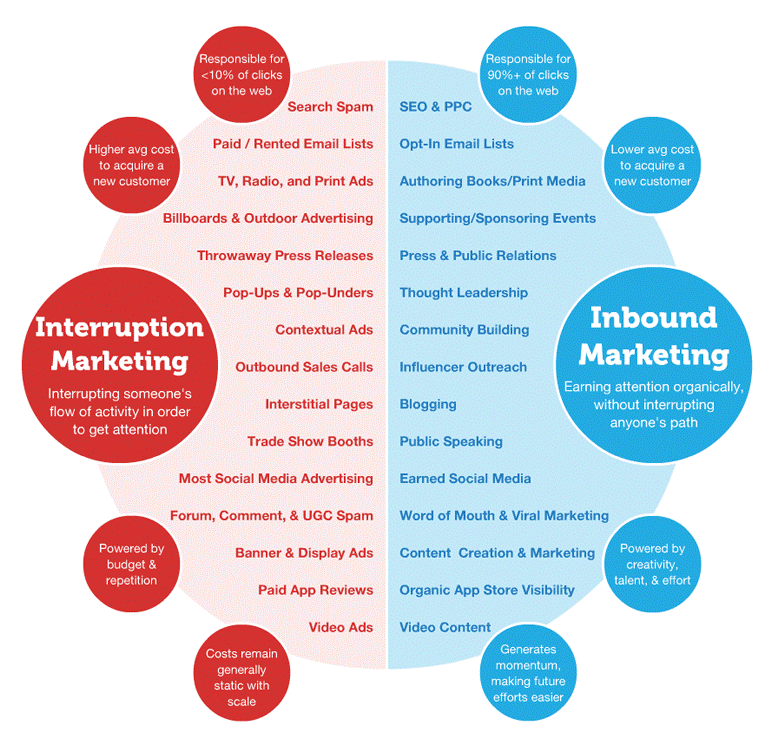
What about Paid Marketing?
Sponsored social posts and paid advertising are expensive but they work quickly so they can give you an immediate boost to traffic, regardless of your stage in business. Paid strategies can be a great way for new companies, as they help them to build their organic strategy. Paid traffic will drop as soon as payments stop, so make sure to have enough organic content before you end a sponsored campaign.
Which Strategy is Better: Paid or Organic?
You’re 100% correct if your gut response to this question is “Both.” Paid and organic marketing strategies are best combined. While the first will increase your traffic in the short term, you must work to create enough organic content over time to sustain these numbers.
Use Organic Marketing to Grow Your Business
Organic growth is a process that takes time, especially for new businesses. Knowing your goals is the most important thing when measuring success. You are likely already involved in some kind of organic marketing, even if it’s not obvious to you. But then, our advice is to onboard an expert and get it rolling.
By now you must have understood, ‘What is Organic Marketing’. And probably, now you are looking for some help in your Organic Marketing efforts? We being a specialized team can help you with that. Contact us for eMail, SEO, Content, or Social Media Marketing Services.
Read More Resources:


